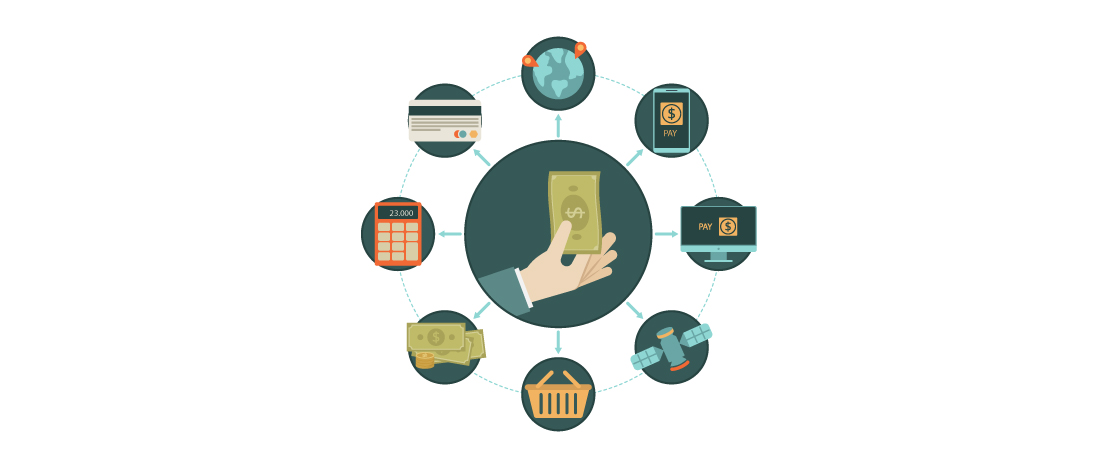
Mastering Ecommerce Marketing: Essential Tools and Strategies for Success
In today’s highly competitive ecommerce landscape, having a well-rounded marketing strategy is crucial for staying ahead of the curve. With customer preferences constantly evolving and new technological advancements reshaping the industry, businesses must adapt by leveraging the right tools and strategies. A successful ecommerce marketing plan can significantly enhance visibility, drive traffic, and increase conversions, all while building stronger customer relationships.
This blog explores the essential elements of ecommerce marketing that can help businesses thrive. Each component plays a vital role in optimizing your online store, from effective SEO practices and comprehensive SEO audits to performance metrics that track success. Additionally, we’ll delve into creating an impactful ecommerce launch strategy, building profitable email marketing campaigns, and utilizing Google Analytics 4 (GA4) to understand customer behavior. We’ll also cover best practices for ecommerce advertising and proven strategies to reduce cart abandonment.
By mastering these key areas, ecommerce businesses can boost their online presence and create a seamless shopping experience that encourages repeat purchases and long-term customer loyalty.
Boost Your Online Store with Effective Ecommerce SEO Practices
Search engine optimization (SEO) is the backbone of any successful ecommerce store, as it drives organic traffic, which translates into potential customers. Effective ecommerce SEO practices start with optimizing product pages. This includes using descriptive titles, meta tags, and rich snippets to help search engines better understand your content. Implementing keywords strategically throughout your product descriptions and using structured data markup also play crucial roles.
Furthermore, internal linking structures and user-friendly URLs make it easier for search engines to crawl your site and improve the customer journey. Mobile SEO is equally vital, as more consumers shop via smartphones. Ensuring a responsive design and fast loading times will boost your rankings in mobile search results. Additionally, voice search optimization and local SEO tactics can further enhance your visibility.
By following these best practices, your ecommerce store will rank higher on search engine results pages (SERPs), attract more traffic, and increase the likelihood of conversions.
Conducting a Comprehensive Ecommerce SEO Audit
A thorough SEO audit is essential for identifying areas of improvement in your ecommerce store’s SEO performance. Start by analyzing your website’s technical health, focusing on aspects such as site speed, crawl errors, mobile-friendliness, and indexation issues. Tools like Google Search Console, Screaming Frog, and SEMrush can help pinpoint technical errors that might hinder your rankings.
Content evaluation is another critical aspect of an SEO audit. Ensure that your product descriptions, blog posts, and other on-page content are keyword-rich and optimized for both search engines and users. Additionally, check for duplicate content that might be hurting your SEO efforts. Don’t forget to evaluate your backlink profile—high-quality backlinks from authoritative websites can significantly boost your SEO.
Lastly, ensure that your site’s user experience (UX) is up to par. Poor navigation and confusing site structures can lead to high bounce rates, which can negatively impact your SEO. By conducting regular SEO audits, you’ll keep your website in top shape, ensuring it performs optimally for search engines and users alike.
Tracking Success with Ecommerce Performance Metrics
Tracking the right performance metrics is key to understanding how well your ecommerce marketing strategies are working. One of the most important metrics is the conversion rate, which indicates how many of your site visitors complete a purchase. To increase conversions, focus on improving the user experience, simplifying the checkout process, and offering multiple payment options.
Another crucial metric is customer acquisition cost (CAC), which measures how much you spend to acquire a new customer. This metric helps assess the efficiency of your marketing campaigns. You’ll also want to track customer lifetime value (CLV) to understand how much revenue a single customer generates over time, helping you fine-tune retention strategies.
Additionally, monitoring traffic sources and understanding where your visitors are coming from (organic search, social media, paid ads, etc.) will give you insights into which channels are performing best. By tracking these performance metrics, ecommerce businesses can make data-driven decisions to optimize their marketing strategies and drive more revenue.
Crafting an Impactful Ecommerce Launch Strategy
Launching an ecommerce store involves much more than just going live with a website. A well-executed launch strategy can make the difference between a successful introduction and a missed opportunity. Start by building pre-launch buzz through social media, email teasers, and influencer partnerships. Engaging potential customers early can create excitement and anticipation.
On launch day, ensure that your site is fully functional, with fast loading times and a seamless checkout process. Offer incentives like exclusive discounts or free shipping for first-time buyers to encourage immediate purchases. Make sure to have clear, engaging product descriptions and high-quality images that will capture your customers’ attention.
Additionally, a solid post-launch strategy is critical. Continuously engage with your new customers through follow-up emails, personalized offers, and social media interactions. Gather feedback and use it to make improvements. By executing a comprehensive ecommerce launch strategy, you can attract your target audience and set the stage for long-term success.
Building a Profitable Ecommerce Email Marketing Strategy
Email marketing remains one of the most effective tools for ecommerce businesses to engage customers and drive sales. A successful email marketing strategy begins with segmenting your audience. By dividing your customers based on behavior, purchase history, or demographics, you can send personalized and relevant content that resonates with each group.
Automated emails, such as welcome emails, abandoned cart reminders, and post-purchase follow-ups, are essential for nurturing customer relationships. Abandoned cart emails, in particular, are proven to recover lost sales by reminding customers of items they left behind. Incorporating personalization—such as using the customer’s name or recommending similar products—can enhance the effectiveness of these campaigns.
Crafting compelling subject lines and providing value through exclusive offers or informative content will encourage higher open and click-through rates. Regularly analyzing the performance of your campaigns, such as open rates and conversion rates, will help you optimize your email marketing strategy for better results.
Leveraging GA4 Ecommerce Events to Understand Customer Behavior
Google Analytics 4 (GA4) provides ecommerce businesses with powerful tools to track customer behavior and make data-driven decisions. GA4’s event-based model allows you to set up custom ecommerce events, such as product views, add-to-cart actions, and purchases. These events offer deep insights into your customers’ interactions with your site.
Tracking these events helps you understand where customers drop off in the purchase funnel, allowing you to identify areas for improvement. For example, if many customers add products to their cart but don’t complete the checkout, you may need to streamline the checkout process or offer more payment options.
Additionally, GA4’s machine learning capabilities provide predictive insights, helping you anticipate customer behavior and adjust your marketing strategies accordingly. By leveraging GA4 events, you can better understand your audience’s journey, optimize their experience, and drive more conversions.
Maximizing Reach with Effective Ecommerce Advertising
Paid advertising is an integral part of ecommerce marketing, helping businesses reach new customers and drive traffic to their stores. To maximize the effectiveness of ecommerce advertising, you must choose the right platforms based on your target audience. Google Ads, Facebook Ads, and Instagram Ads are popular choices for ecommerce businesses due to their large user bases and advanced targeting options.
Creating ads that resonate with your audience is crucial. Use high-quality visuals, clear messaging, and strong calls to action to capture attention. Dynamic ads, which showcase products that users have previously viewed, are highly effective in encouraging conversions.
It’s also important to monitor the performance of your ads regularly. Metrics such as click-through rates (CTR), conversion rates, and return on ad spend (ROAS) provide insights into what’s working and what needs adjustment. By continuously refining your ad campaigns, you can increase your reach and drive more revenue.
Proven Cart Abandonment Reduction Strategies and Tools
Cart abandonment is one of the most significant challenges ecommerce businesses face, with an average abandonment rate of nearly 70%. However, several proven strategies and tools can help reduce this rate and recover lost sales. One of the most effective tactics is sending automated abandoned cart emails, reminding customers to complete their purchase and offering incentives like discounts or free shipping.
Simplifying the checkout process is another critical step. Remove unnecessary fields, allow guest checkouts, and provide multiple payment options to make it as easy as possible for customers to complete their purchases. Trust badges, secure payment gateways, and clear return policies also help build customer confidence and reduce cart abandonment.
There are also tools like Rejoiner, OptinMonster, and CartStack that specialize in cart recovery, offering features like exit-intent popups and personalized reminders. Implementing these strategies can significantly reduce cart abandonment and increase your overall conversion rate.
Conclusion
Ecommerce marketing is a complex and dynamic field that demands a strategic and comprehensive approach to achieve success. In today’s competitive landscape, businesses must focus on a variety of key areas to stand out and thrive. This blog explores some of the most critical aspects of ecommerce marketing, including implementing effective SEO practices, conducting regular SEO audits, and using performance metrics to monitor success. Additionally, it covers essential strategies like crafting impactful email marketing campaigns, leveraging advanced tools like Google Analytics 4 (GA4) for customer insights, and optimizing advertising efforts to reach a broader audience.
We’ll also dive into proven methods for reducing cart abandonment, a major challenge for many online stores. By utilizing these tools and strategies, ecommerce businesses can enhance visibility, improve customer engagement, and drive higher conversion rates. Mastering these areas will not only help businesses recover lost sales but also build a strong foundation for long-term growth and customer satisfaction. Whether you’re just launching your store or looking to optimize your current strategies, this guide provides valuable insights for ensuring sustained success in the ecommerce world.


